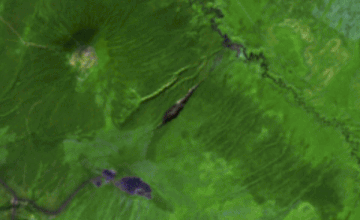The melting of subterranean permafrost in polar regions poses a concerning threat, highlighted by the revival of a 48,500-year-old ‘zombie virus’ from Arctic permafrost. Recent research delves into the alarming rate of expansion of Siberia’s Batagaika crater, which devours the Earth’s surface at a rate of 35 million cubic feet annually. This phenomenon, initially discovered in 1991, is a thermokarst depression driven by permafrost loss, not an actual crater.

Permafrost, despite its name, is not permanent ground but remains at 32°F (0°C) or colder for over two years. Covering a quarter of the Northern Hemisphere’s land surface, permafrost ranges from a few feet to almost a mile deep. The concern with Batagaika lies in its rapid expansion, fueled by rising air temperatures, initiating a positive feedback loop that escalates as long as there’s ice to thaw.
As permafrost degrades, the ground transitions from concrete-like to a muddy mass, unable to support surface vegetation. The collapse exposes organic matter previously preserved in ice, releasing carbon into the atmosphere and intensifying warming. The consequences extend to the emergence of archaic viruses and microbes, potentially posing hazards to contemporary biology and healthcare. Remarkably, in 2016, a thaw in the permafrost released bacteria responsible for anthrax, leading to significant fatalities among reindeer and local inhabitants.

The Batagaika depression, nicknamed ‘gateway to the underworld’ and ‘gateway to Hell’, showcases sheer cliff-like borders uncovering permafrost estimated to have endured freezing for 650,000 years. Currently measuring roughly 50 meters (164 feet) in depth, with certain sections plummeting to depths of 100 meters (328 feet), it has attracted attention as a sightseeing destination despite its ominous implications.
In essence, the accelerating expansion of the Batagaika depression serves as a glaring illustration of the aftermath of permafrost deterioration propelled by climate change. Beyond its tangible impact on the Earth’s surface, it raises disquieting concerns regarding the release of ancient pathogens and the exacerbation of atmospheric warming. Tackling these challenges demands concerted endeavors to alleviate climate change and grasp the intricate interconnections between thawing permafrost, environmental dynamics, and human health.


